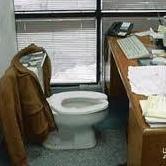Leaderboard
Popular Content
Showing content with the highest reputation on 02/25/2022 in Posts
-
Me: You did get the refund, but you paid off another debt with it.4 points
-
If you use code "M" in column (f), leave the dates blank. Otherwise, "various" should work.3 points
-
TP: Prior year balances were taken care of with the vouchers you gave me. Me: okay then you should get this year refund TP: Nice Three week later TP: my refund as not arrived Me: are you sure you didn’t have outstanding penalties and interest, because the vouchers I gave you only covered the tax…. TP: I never received anything Me: checks where is my refund and boom TP refund was applied to a collections…. TP: mmm, so no refund, you said I would get it2 points
-
Wouldn't these expenses be part of the estate 1041 return? Without any 1041 income the losses 'should' carry forward to the final return, when they sell the equipment and distribute the rest of the cash, right ?2 points
-
2 points
-
When I have the 8879 signed after returns review, I also have the client(s) initial the payment pages that they have confirmed the direct deposit/debit amounts AND the bank routing and account numbers whether for tax refunds or payments and/or estimates.2 points
-
Yes. We have a manufacturer here where some fool must have gone around telling everybody to rob their retirement accounts. Ok, yeah, that's reasonable since your hours were cut to 32 rather than 40 for six weeks. Great move, barely escaped with your life there. Missed all that growth and have zero understanding. I begged one lady to not report the whole 93,000 in 2020. Wish the others had now.2 points
-
1 point
-
See the discussion in The Tax Advisor on the difference between a "superseded return" and an amended return": https://www.thetaxadviser.com/issues/2021/jul/superseding-returns-statutes-limitation.html1 point
-
1 point
-
Yes, it is. Sad to say it is not full proof or 100% either. Just responded to a CP3291A for a client who paid using Direct Pay in June of 2021 to pay the amount proposed in the CP2000 they received. We have the confirmation statement, bank account showing the draft responses etc. I had a client yesterday insist on writing and mailing a check cause they've done it this way for years. I strongly suggested the direct draft through the software. Some folks are still old school and resistant to change. I like that idea. Drake now generates a transaction summary form for the client to sign they authorized the direct draft or direct deposit. To include a form like you mention is a small task in Drake. That way the client can't say they weren't advised of the risks.1 point
-
So that you're not implicated in any way? If they choose to pay by check, and you explain the risks associated with that, the onus is on them, no?1 point
-
The AICPA and all 50 state CPA societies have formally requested the IRS postpone the schedule requirements another year. Hopefully IRS will do so and quickly.1 point
-
No cites, but I would suggest that if the money shows as a credit on their account which they are free to cash out at any time, then they have constructively received it and must account for it this year - any amount not used for qualified expenses is taxable income. If it is merely a promise of future aid which is contingent on them enrolling in a future semester, then it hasn't been received. This sounds like a Pell grant. These are often awarded in amounts in excess of the tuition at community colleges. The excess would be credited to the account and often is issued as a debit card which they call a "refund". Again, if not used for books or other qualified expenses, the excess is taxable. Unfortunately, there is a "loophole" such that if the grant is greater than the tuition and fees, the college is not required to issue a 1098-T.1 point
-
I don't have a cut and try answer here, but believe there is confusion over what it means to have a home office and deduct mileage. With a home office established as your principal place of business, you are allowed mileage for any business travel away from there. The key here is that your home is your place of business. However, I don't believe there is any written authority that says you must have a home office in order to deduct mileage form your home. Consider the case of an log truck driver owner/operator who leaves his home at 4 am to go pickup his first load of logs in the woods 30 miles away. I would not consider that commuting and prorate his depreciation, diesel...etc. Those are ordinary and necessary business expenses that start at the first turn of the key in the morning. While I do not have any authoritative cites to back this up, in reality, the principal place of business for the log truck and full time "uber/whatever" driver is behind their respective steering wheels; and while there are differences between the two cases there are certainly similar fact patterns. I do not have any uber driver type of clients but would dig in deeper if I did.1 point
-
No, never. Around 2003 I stopped attaching brokerage statements. Prior to that I typed "see attached" w/ "various" for dates and totals in the proceeds and basis. After 2003 I put broker's name for the security instead of "see attached" and stopped attaching statements. When the 8949 came out around 2010, I started using code "M" and never attached a statement. Thousands of tax preparers around the country never attach a statement.1 point
-
1 point
-
Usually there is no need to attach 1099Bs because everything is listed on the 8949s or directly on the D. The only time I ever attach the 1099s is when there are loads of pages of noncovered transactions, wash sales, etc., that would take forever to type in individually. Actually, lately I've just entered the totals for each type on the 8949s if there are pages and pages of transactions. Bottom line is the same.1 point
-
I almost never use those lines because I like to see the totals on the 8949 Details tab. In the case of multiple brokerages, I would enter totals by brokerage by code. I would not add them together because it's easier to look at later and double check, if they're entered separately. But from a tax standpoint, you could add them up or do an Itemized List on Sch D, but at that point, you might as well enter them on 8949.1 point
-
Same, but I like to input on the Details tab because it's like a spreadsheet and it has totals. You'll want to set the Preference to not calculate when working in Detail tabs because, for some unknown reason, it calculates really slowing in Detail tabs. But saving recalculates so enter a line and save, then check that the gain is correct. If there are wash sales, the code is MW, and multiple codes have to be alphabetical (BMOW). And, yes, I have used the BMOW code when a K1 sale is included on the 1099B.1 point
-
1 point
-
I recently completed one of these with a lot of questions and one of those questions was the mileage. The mileage that Uber/Door Dash reports is the mileage of the trip for the customer and as Pacun stated, it may include milage when the app is turned on. They do not break it into any detail. In my case, my client has a home office for transacting their Uber business. Mind you, this person is well in the five digit figures, and spends nearly all their time driving folks, hanging out at airports; etc. To error on the side of caution, and because there doesn't appear to be any code or regulation, I did not take the commute mileage to either pick up the passenger or go to the airport. I did use the report mileage and did advise my client to keep a better mileage log. I agree with Tom and Abby on this.1 point
-
0 points










